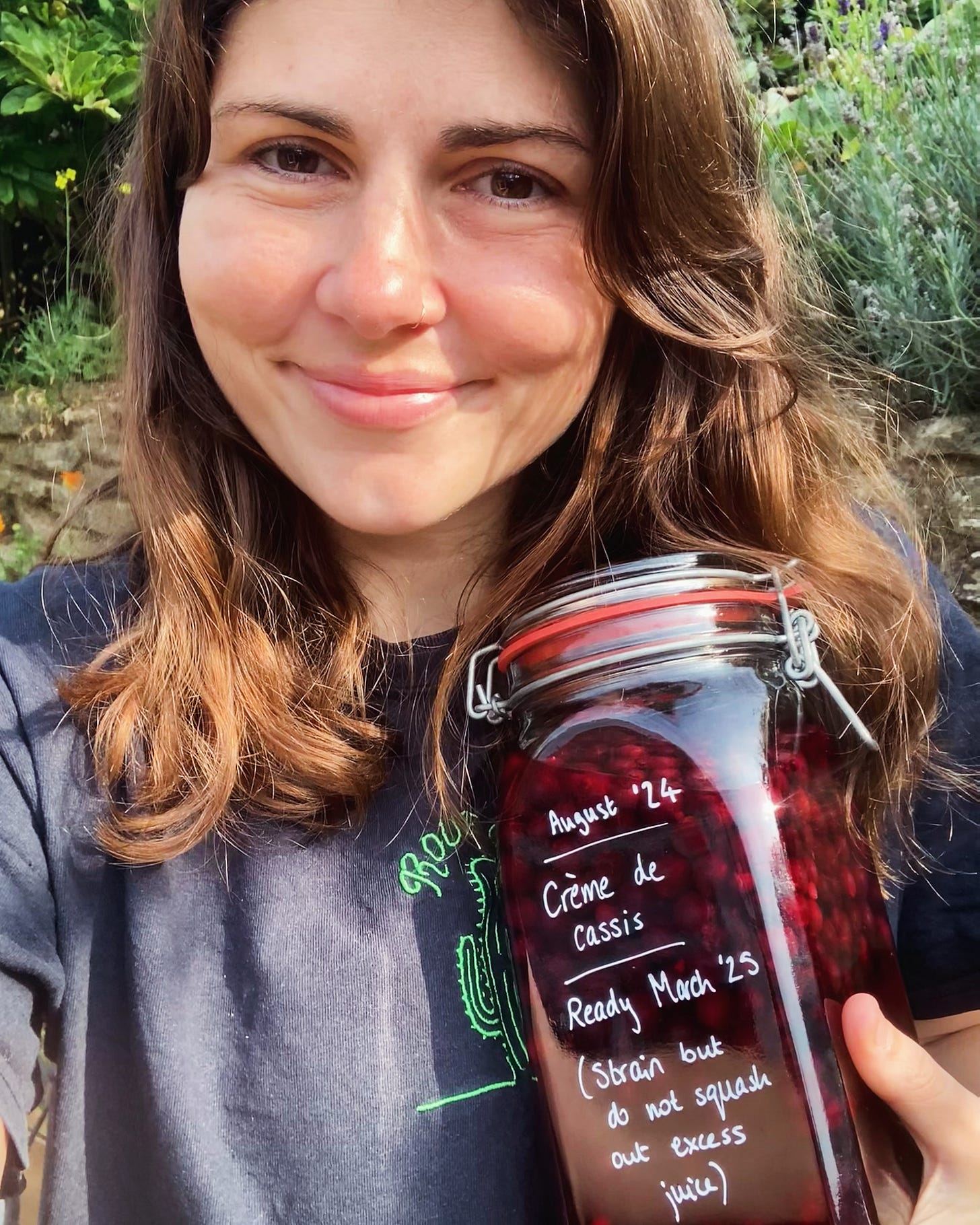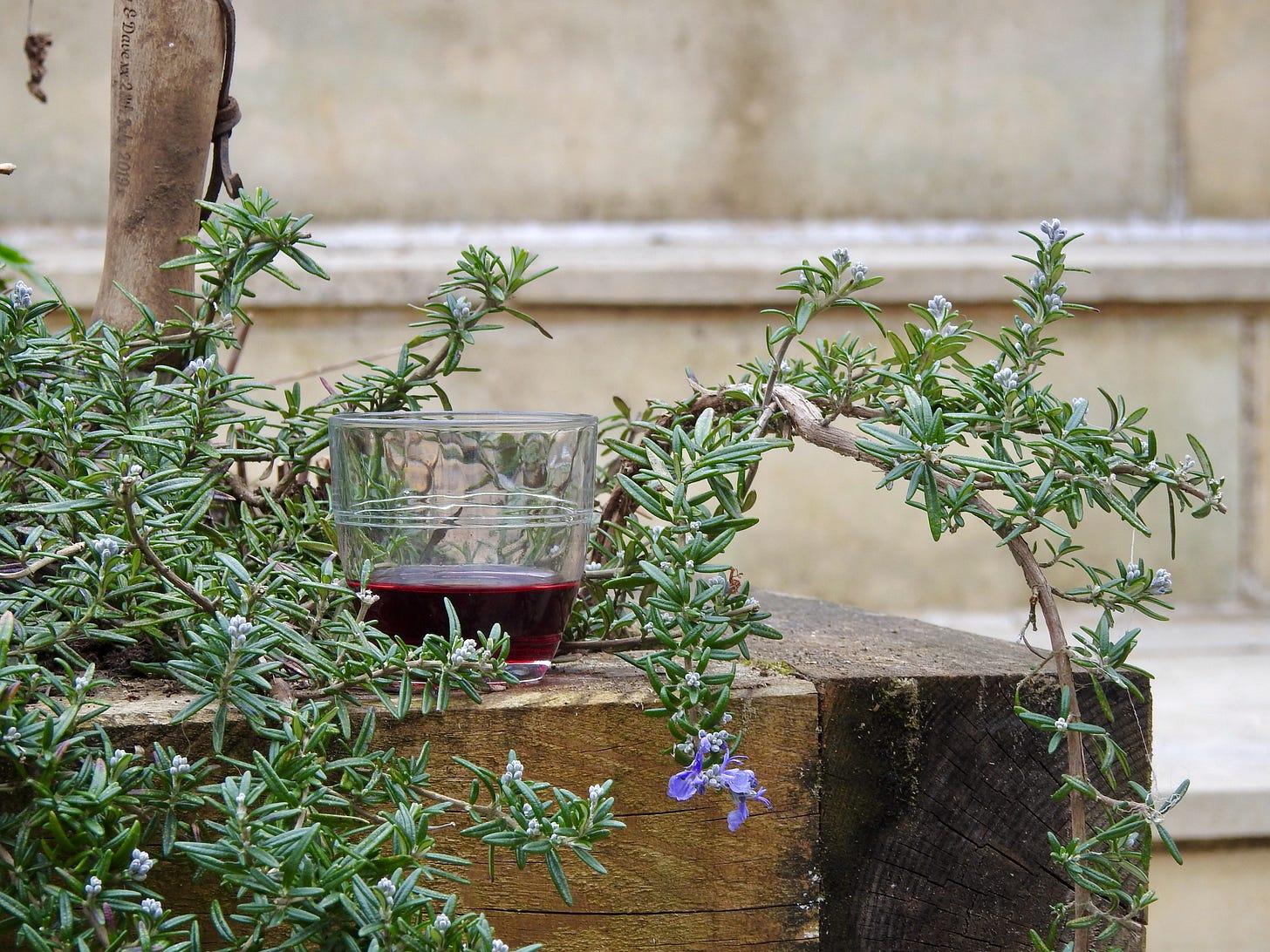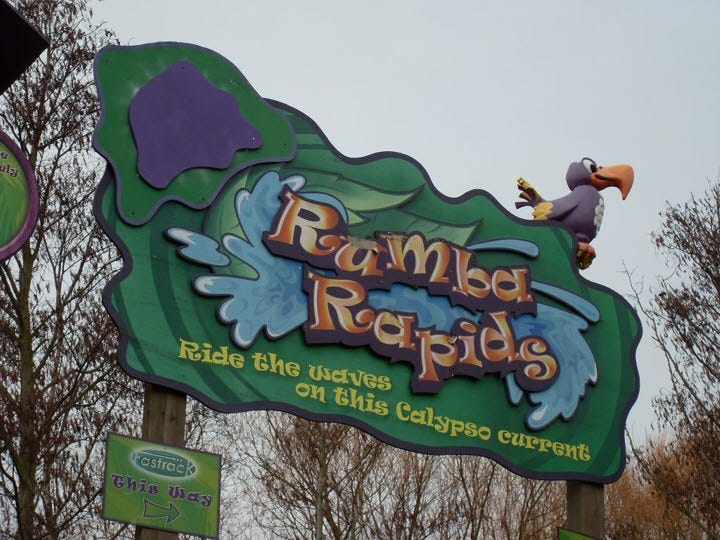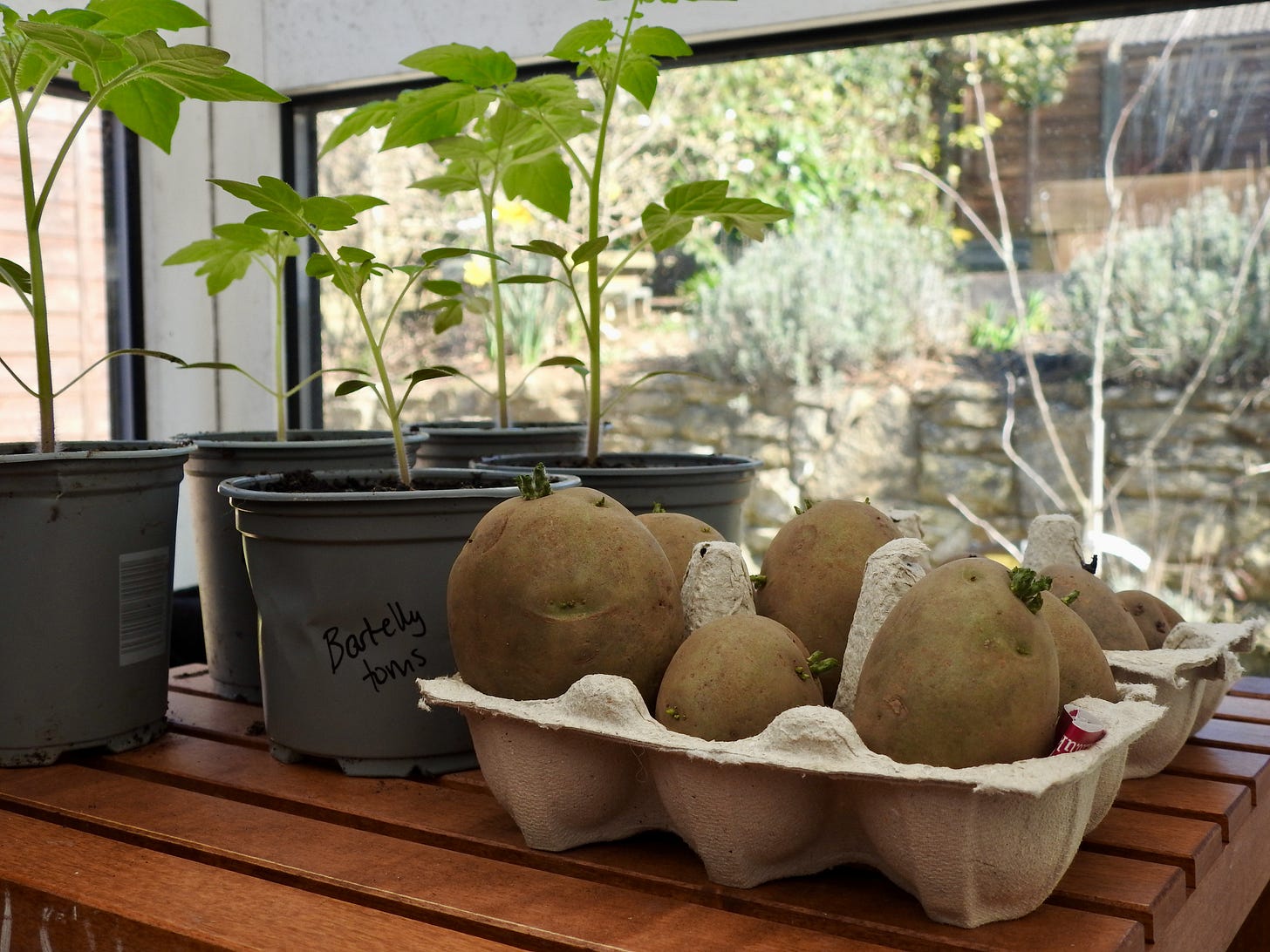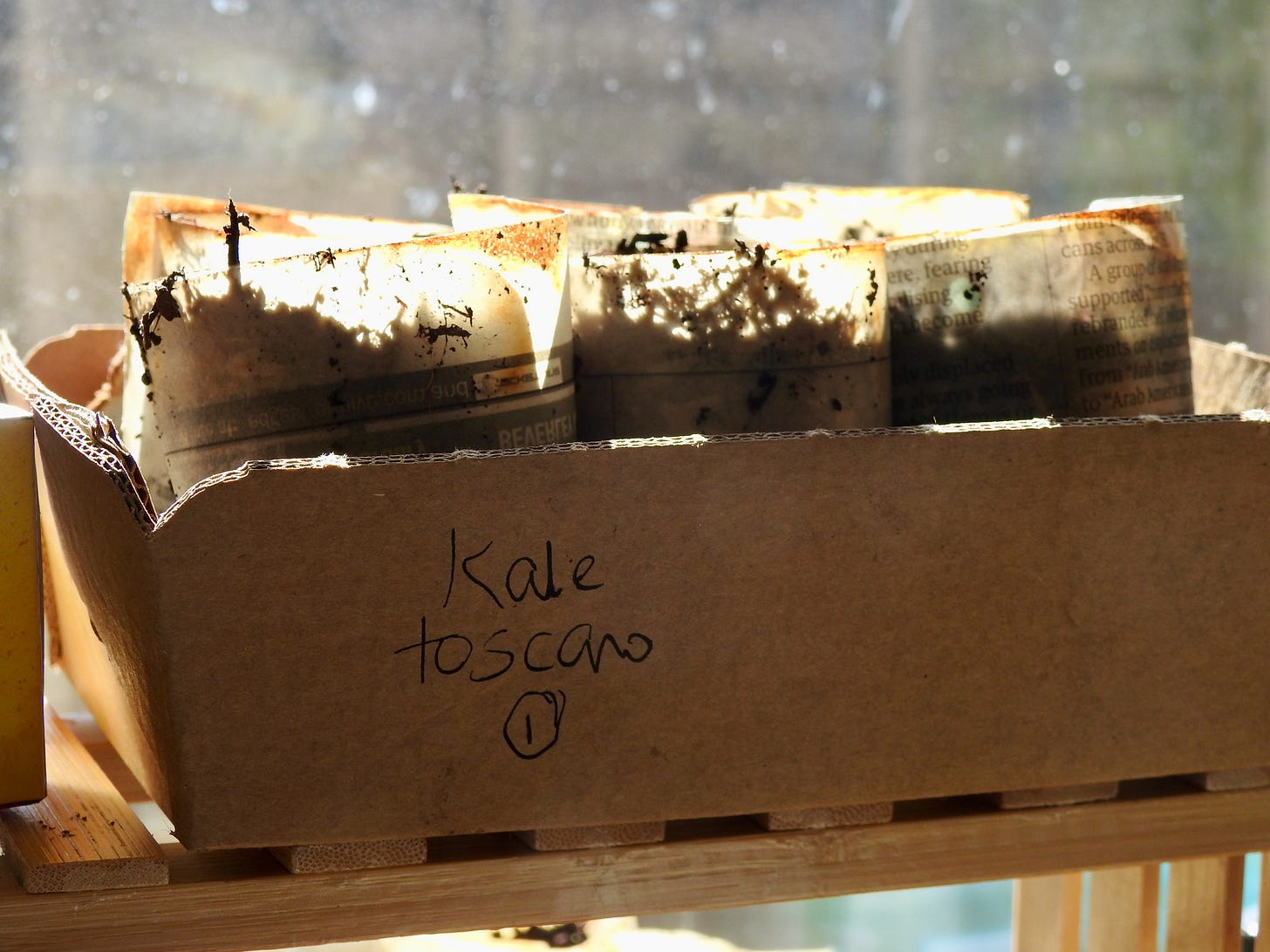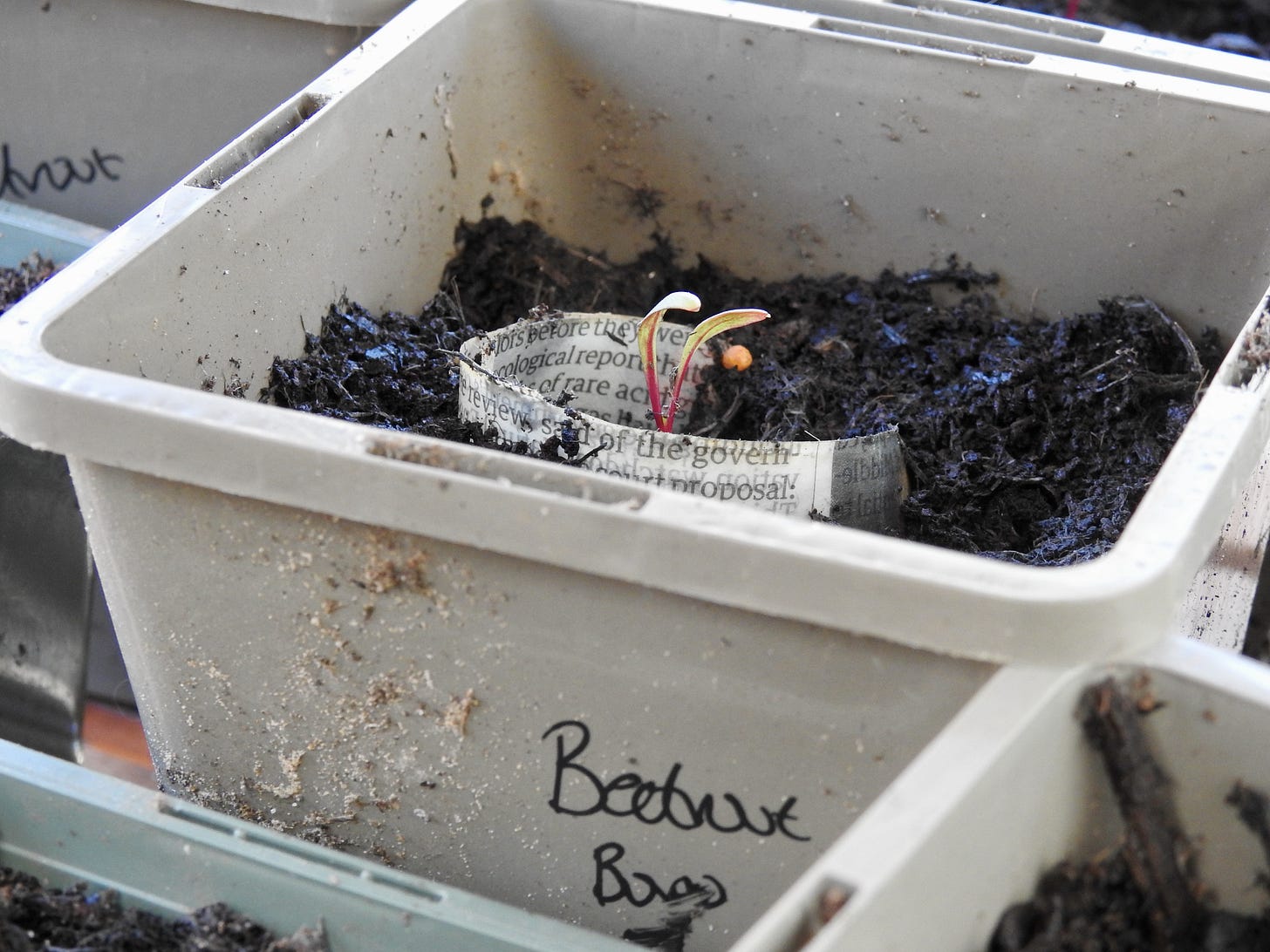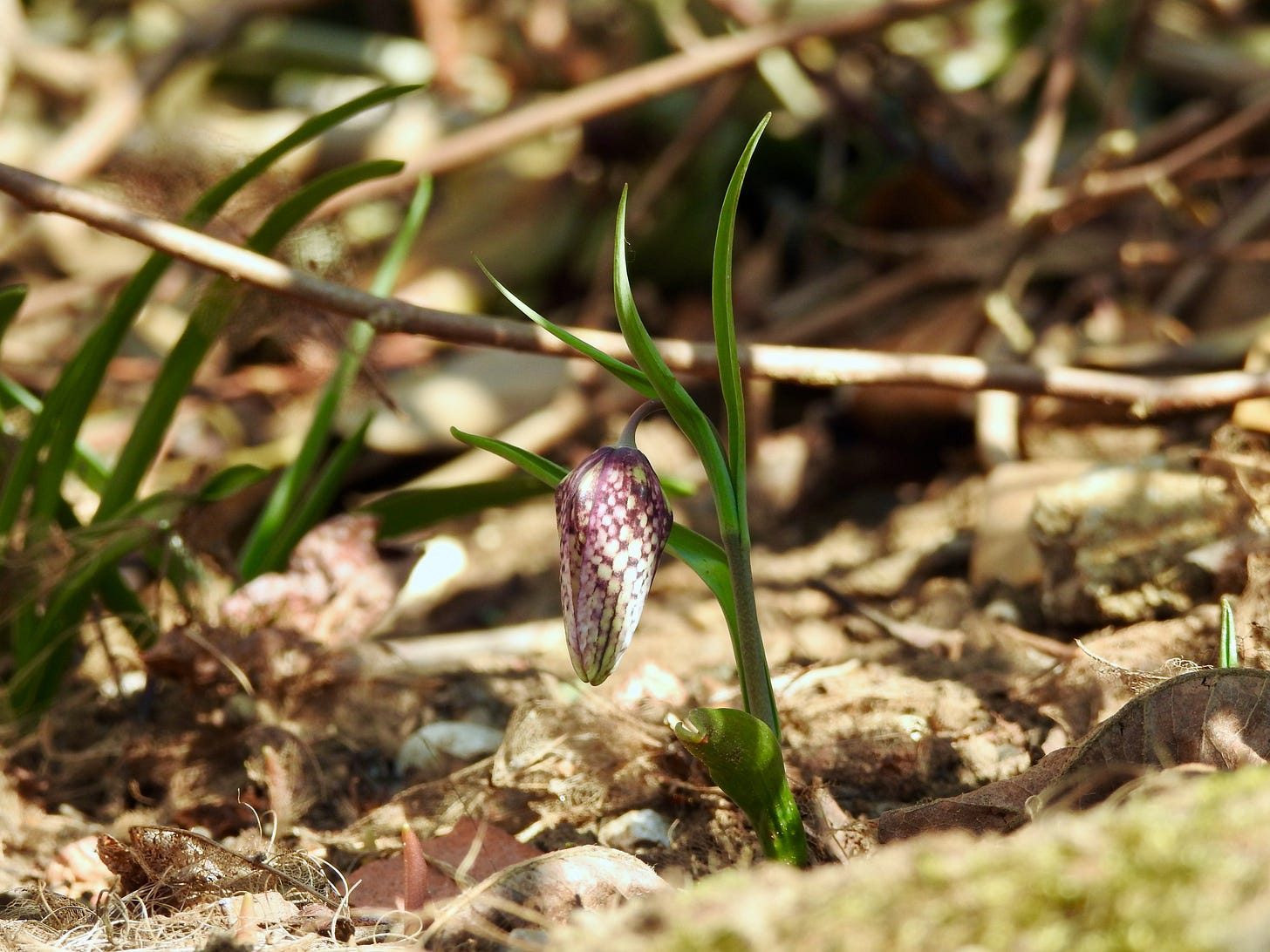What I dream about when I dream about the future
An earthy kinda wealth
Last summer I wrote about making crème de cassis using the blackcurrants in my sister’s garden. They moved in nearly two years ago and inherited a lovely patch of land overlooking farm fields and open skies, and in the corner the old lady who lived there before had built walk-in fruit cages for growing blackcurrants, raspberries and gooseberries. I went round with a fun little currant-collecting device and gathered a punnet-full, then added them to cheap vodka and sugar before leaving it to develop for six months.
Friends, I’m excited to report that it is now ready to drink and oh my gahd, it’s an absolute treat. Dave and I taste-tested it last week and it was dangerously drinkable because you could barely even taste the booze. Sharp and tangy with a hint - according to Dave’s palette - of capers. Or in the words of Alan Partridge: ‘This tastes like Chewits.’
Basically what we have here is adult Ribena, and if you’ll allow me, let’s go on a journey through my teenage memories, all the way back to Thorpe Park, circa 2007. I’ve been there a handful of times because it’s my nearest ‘good’ theme park, and every time I go I uphold a tradition of getting a photo on the Rumba Rapids. (A boring ride but the photo opp is great for getting all your pals in frame without looking g-force demented.) In 2007, when I was 15, we went on a school trip to Thorpe Park under the broad theme of ‘Physics’. Reader, we learnt not a single thing about physics, but we did have a bloody great day out, although you wouldn’t know it from the Rumba Rapids photo included below. The eyeliner, the fringes, the skinny jeans. If this doesn’t scream private-school-gals-raised-on-Cosmo-Girl, I don’t know what does. (I’m the upside-down one, by the way.)
The reason I share this heritage snapshot with you is because it captures a special moment in time. Crème de cassis is famously one of Poirot’s favourite drinks, so I invite you to embrace your inner detective and observe the logo on the front of the picture, compared with the one on the side of the boat. From 2002 to 2006, Rumba Rapids was sponsored by none other than our friend Ribena, which meant the whole ride was speckled with cartoon blackcurrants in various forms. This photo was taken the year after the sponsorship ended, but it was obviously way too much effort to remove all the Ribena references, which is why it’s still featured on the boat logo.
I know what you’re thinking: Why am I learning about the history of the Rumba Rapids? Well I’m really sorry but you’re reading my Substack, which means you are committed to falling down the same rabbit holes as me, and one of my favourite rabbit holes in the whole world is abandoned places, worn down commercial infrastructure and manmade relics. Chernobyl is the obvious poster child, but I also love ghost malls, faded billboards, abandoned towns, decommissioned railway tracks, empty factories, lost zoos and theme parks - all the weird old places that seem to bubble over with joyful, morbid decay. They give me a tingly feeling akin to seeing a ghost.
And somewhere along the Rumba Rapids river, there is a tunnel that once contained one of these spine-tingling relic things that I can’t describe in words very well. In this very photo, we had just departed the tunnel and seen for ourselves the haunting remnants of a light-up display of plastic Ribena berries. But alas - cut short by the severance of their sponsorship contract, these berries were no longer lit up. Instead, they were forced to live in darkness until somebody could be arsed to remove them. When we entered the tunnel that day, all was black except for the distant flashes of pretend lightning that illuminated - just briefly - the silhouettes of these forgotten blackcurrants. How long did they stay in that tunnel? Where are they now? It’s been nearly twenty years and I still can’t forget.
Back to the here and now, my little glass of blackcurrant liqueur has me thinking about all the things I dream about when I dream about the future. Obviously a healthy, happy family and friends, somewhere warm to live and a functioning body and mind, but aside from those essentials, my future dreams are very much garden-based. More specifically, I dream of owning a small house on a medium-sized piece of land, big enough to grow an orchard, keep chickens, grow vegetables, keep bees and have a really snazzy greenhouse in which I might grow peaches and grapes. Is that too much to ask? IS IT?
I don’t know if it’s the political gloom or climate doom, but self-sufficiency has become my idea of heaven. A future-proofed sanctuary in which I can live with my family and have room for friends. And although we are nowhere close to that point yet, we are fortunate enough to own our current house (with a mortgage, obvs), and the garden has become a little microcosm for me to learn all about growing food in an organic, circular, wildlife-friendly way.
I. Am. Obsessed.
And it goes deeper than just saving a bit of money and reducing our reliance on the supermarket. In Karl Marx’s theory of alienation, he describes how people have become separated and estranged from their work, the wider world and their own selves, mainly as a consequence of the way we have separated workers from the means of production. Instead of a human being having self-determination through their own thoughts and actions, instead of, for example, owning and tending to their own modest plot of land to feed their family, or even contributing to a community plot, most of the means of production are now owned by what Marx called the bourgeoisie - the class of people who seem to be owning more and more of society’s resources by extracting value from their workers.
People become cogs in a machine, working relentlessly to make others rich, without having anything of their own to give them purpose and self-reliance. These days, we have pushed it even further by moving into a rentier economy, where income is derived from ownership and control of assets and resources, leading to a concentration of wealth in the hands of the few, who then lease what they have back to regular people at inflated prices. We don’t own films or music anymore, we pay monthly fees to stream them. Owning a house is becoming more and more difficult, while rent is extortionate. We lease cars instead of owning them, and if we run a small business, we rent space on big online sites like Amazon or Etsy. Even our social media platforms are holding our intellectual property at ransom - if they close tomorrow, our audiences disappear, too.
So in a world where it is increasingly difficult to feel secure, I’m feeling more and more grateful for the ability to grow the food that feeds our family. Is there anything more fulfilling than that? And of course, like most people, the cost of living is really starting to bite, which means it is extra satisfying to grow things for (almost) free. If you’ll allow a moment of vulnerability here, this week we officially changed supermarkets from Tesco to Aldi. Not only that, but we’ve switched from an online shop to a manual one. Like, I’m back shopping in the supermarket for real.
But no, please, hold your tears. We must all be brave in the face of change, and my goodness are there changes ahead for me and my fridge. No more Oatly barista. None of my fave gluten free biscuits. Only one variety of kefir yoghurt. SAD. But push forward we must, and even though we all need supermarkets during the week, there is something about the monotony of the aisles, the excessive plastic and the enigmatic pricing (how can anything be that cheap?) that all just makes me more motivated to find new pathways towards self-sufficiency.
Once upon a time, back in those hazy Rumba Rapids days, life was all about booze and boys. Now I spend my time chitting potatoes and making comfrey fertiliser, and it could not be more thrilling.


